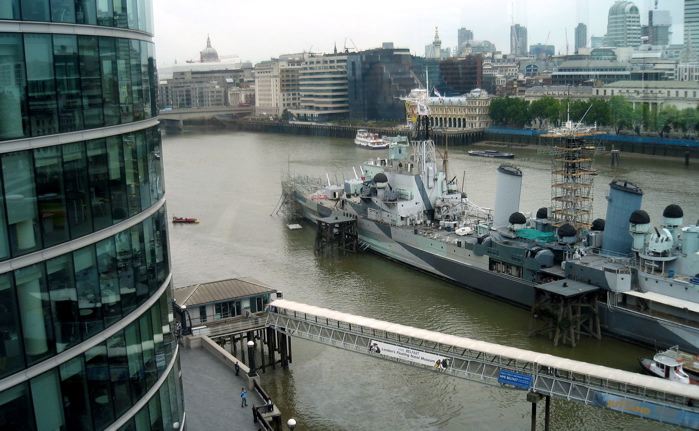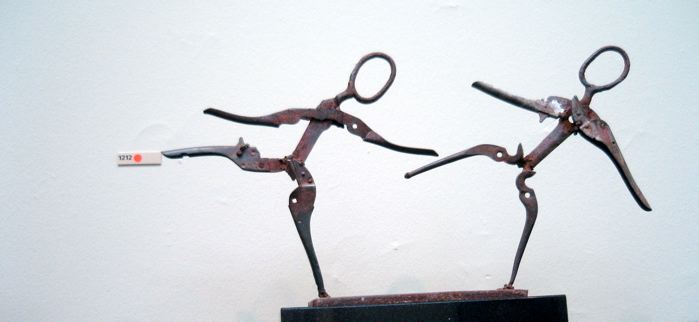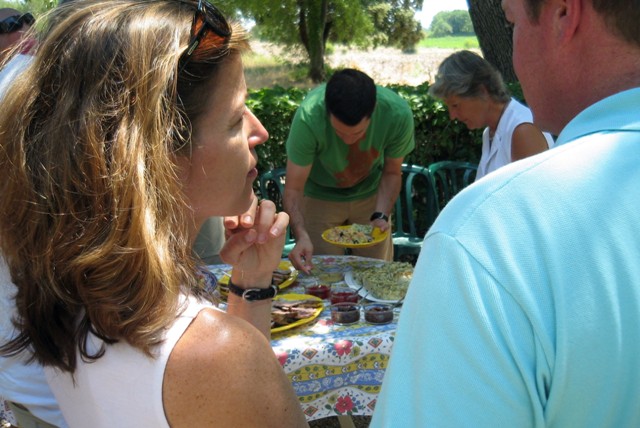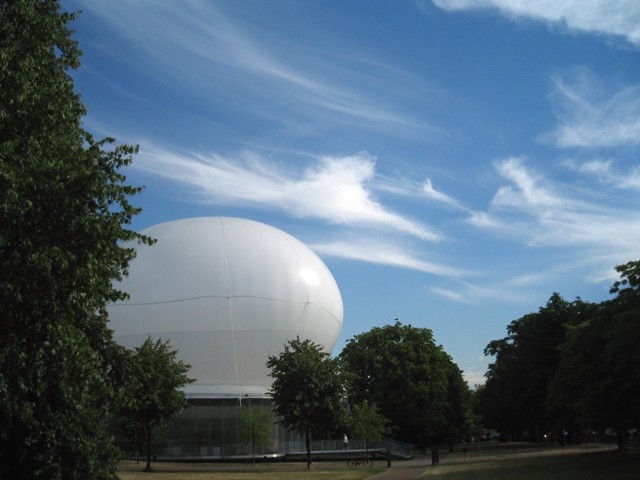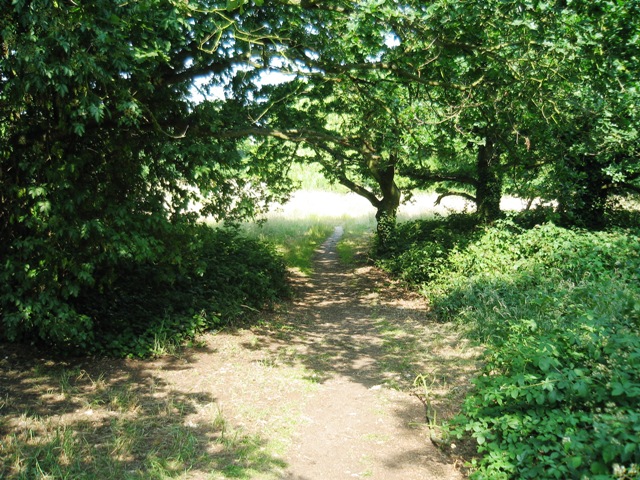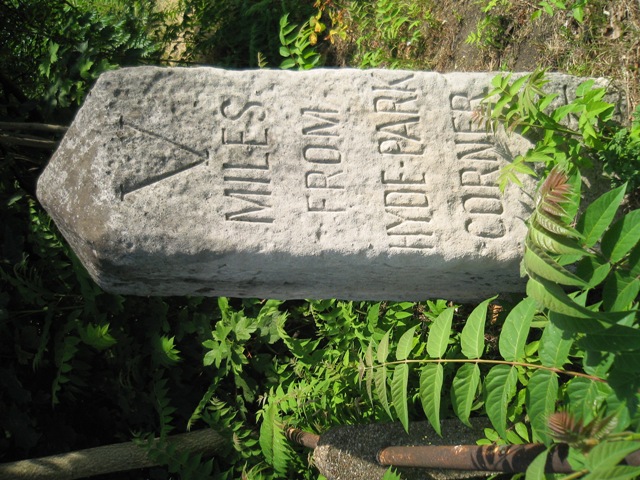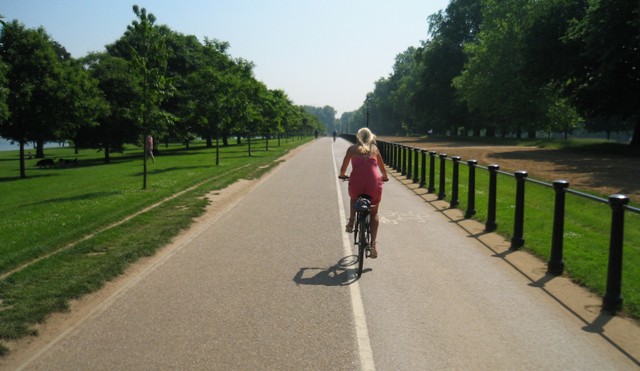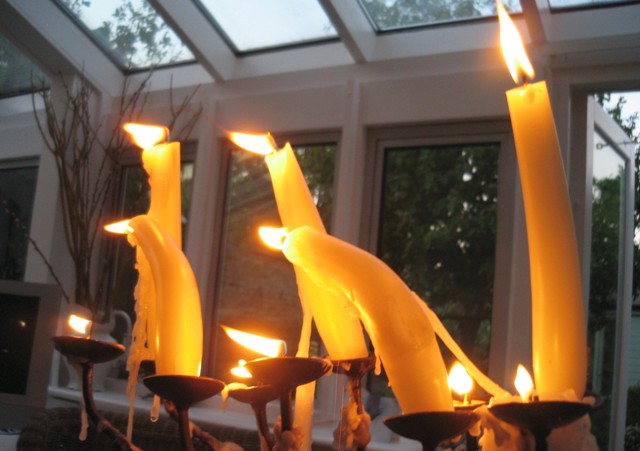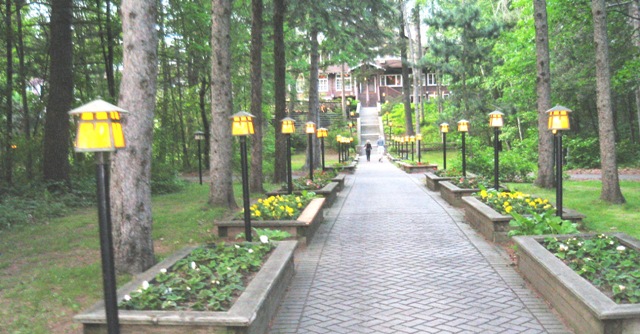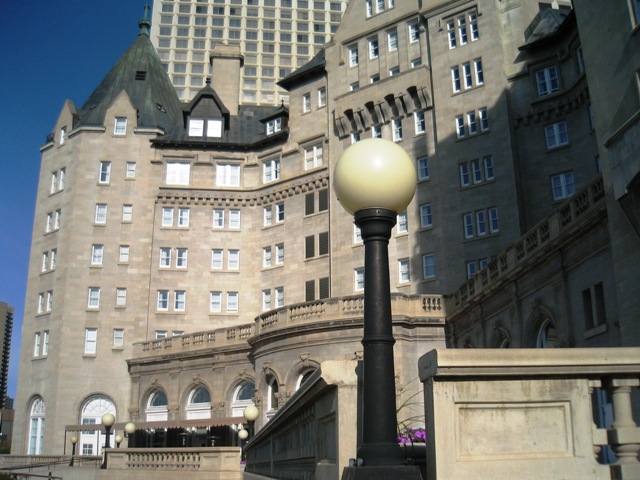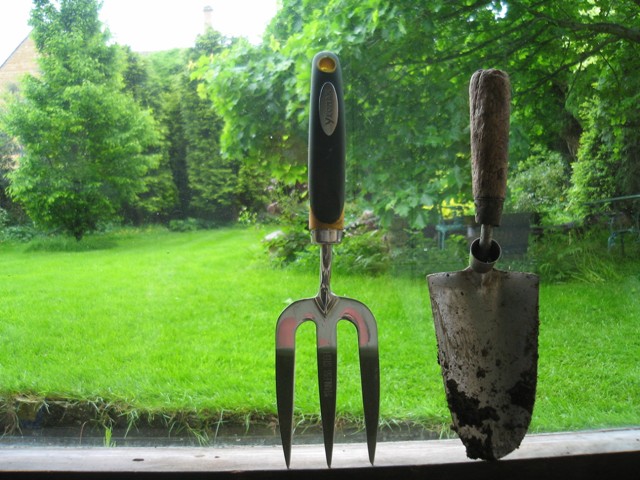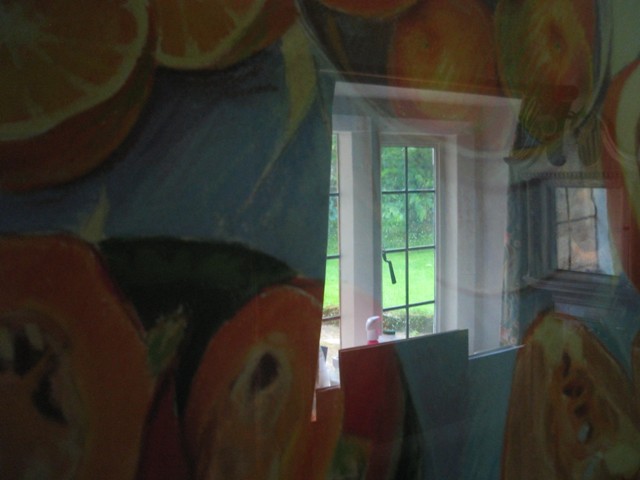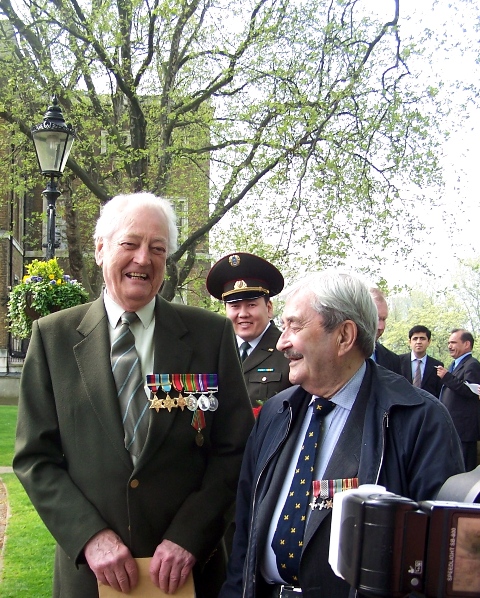Saturday, September 30, 2006
SUSTAINABILITY APPOINTS SKOLL FELLOW
SustainAbility put out this press release yesterday:
SustainAbility appoint Maggie Brenneke as first Skoll Fellow
Hot on the heels of the announcement of a $1 million, 3-year grant from The Skoll Foundation, SustainAbility has appointed its first Skoll Fellow to help run its evolving Skoll Program on entrepreneurial solutions to sustainability challenges. Maggie Brenneke joins SustainAbility as both Associate Director and Skoll Fellow. She will work closely with John Elkington, SustainAbility’s Founder and Chief Entrepreneur—and will also play a leading role in business development and consulting, bringing expertise in the energy sector.
“The Skoll grant has been an extraordinary shot in the arm,” says John Elkington, “and Maggie Brenneke will help us drive our work in such areas as creativity, innovation and entrepreneurship. Our thanks to Jeff Skoll. Both with his Foundation and his new movie studio, Participant Productions, Jeff—who co-founded eBay—is an extraordinary example of entrepreneurial energy. A central goal as we move towards our twentieth year as a business is to leverage the passion, experience and contacts of such people in support of sustainable development.”
Prior to joining SustainAbility, Maggie worked in Portland, Oregon for LaunchBox a boutique strategy and market research consultancy, and for Ecos Consulting, as a Senior Manager focusing on developing energy efficiency and renewable energy transformation programmes for utility and government clients. Maggie has ten years’ industry experience and has a BA in Economics and an MBA.
So what persuaded Maggie Brenneke to become the first Skoll fellow? “What attracts me to SustainAbility and The Skoll Program”, she says, “is the opportunity to tap the wells of creativity springing up around the world – and in some of the most unusual places – to inspire fresh thinking in addressing our most pressing social concerns.”
Two new analysts join London team
Joining the London-based team in early October, Ivana Gazibara and Jean-Philippe Renaut will play important roles in supporting the implementation of SustainAbility’s new strategy. Recently graduated from the London School of Economics with Masters degrees and as key members of the Global Reporters research team, Ivana and JP will be working to apply their insights in key areas of SustainAbility’s forward strategy such as the emerging economies program and in further development of our ICT and healthcare sector practices.
Friday, September 29, 2006
CRYING WOLF
Our latest Grist column is titled Citizen Hope. It begins, “Who’s afraid of the big, bad future? Al Gore, clearly — and pretty much anyone who has seen An Inconvenient Truth. While Gore’s dissenters may argue that he cries wolf too often, no one who knows and understands the statistics used in the film can doubt that the Big Bad Wolf of climate change is at the door. The question is whether our economies are best built of straw, sticks, or bricks.”
For more, http://www.grist.org/biz/fd/2006/09/27/crywolf/
HOW MANY LIGHTBULBS DOES IT TAKE TO CHANGE THE WORLD?
The question isn’t mine. It’s from the September issue of one of my favourite magazines, Fast Company. And it’s about Wal-Mart’s plans to push compact fluorescent lightbulbs, with dire implications for the now wildly obsolete incandescent lightbulb industry. The scale of the company is mind-boggling, although that scale can be used for good or ill – as a range of activists, unions and local communities have argued in recent years. But my sense is that Wal-Mart CEO Lee Scott was serious when he described his environmental epiphany, post-Hurricane-Katrina, as waking up to the fact that the broad spectrum of environmental issues can be seen as “Katrina in slow motion.”
IN NATURE’S FACE
For some years, I have contributed a monthly column to a Japanese newsletter, Nikkei Ecology. The latest covers the death of Australian wildlife enthisiast Steve Irwin, whose funeral got saturation coverage when we were in Oz. Here is the piece:
NATURE HAS WAYS OF STRIKING BACK
When the World Economic Forum convened in Davos this year, one key question was what risks the world faces in the future? Among them, alongside terrorism, conflict and climate change, was the growing threat of pandemics. And that threat was brought home to me during a lecture tour of Australia and New Zealand a few weeks back, partly through the death of an internationally known Australian wildlife expert, and partly as I read a book—China Syndrome, sub-titled ‘The True Story of the 21st Century’s First Great Epidemic,’ by Karl Taro Greenfeld—on the long flight home. The book, which reads like a thriller, is about the evolution, spread and eventual containment of the SARS epidemic.
As we shuttled between conference venues in Australia, the TV screen in the limousine showed long sequences of the funeral of Steve Irwin, featuring the country’s Prime Minister John Howard (a political ally of President Bush in denying the reality of climate change) and an extraordinary list of Hollywood stars, including Russell Crowe, Kevin Costner (who made the film Waterworld in part to underscore the threat of climate change) and Cameron Diaz. But the highlight of the show turned out to be a tribute to her father by Irwin’s 8-year-old daughter, Bindi. Among all the tears and TV cameras it would have been easy to miss a key element of the drama: Irwin’s fame came in large part because he got in close to wildlife, for example wrestling crocodiles on camera. So the nature of his death—killed by a stingray, whose barb punctured his chest, was hardly a surprise.
What struck me as I watched the tributes flow was that Irwin’s work and fame was symptomatic of a world in which the human species pushes ever deeper into the natural world. Yes, that creates opportunities for wonderful television, but it also opens up growing opportunities for unknown diseases to cross the species barrier. Among the diseases that have jumped in this way have been Lassa fever, HIV/AIDS and SARS (Severe Acute Respiratory Syndrome). In his book, Greenfeld takes the reader on an extraordinary ride from the bedside of an early Chinese victim, via leading laboratoriess where researchers race—compete—to identify the new illness, to the World Health Organization as officials desperately try to work out what is going on behind massive Chinese government cover-up. We only just escaped a devastating global pandemic, with 15-20 per cent of those infected dying
SARS probably originated in the city of Shenzen, in China’s Guangdong province. Scientists tracked the site of the wild-species-to-human jump to markets and restaurants selling, slaughtering and cooking exotic wild animals for what is known as ‘Wild flavour’ cuisine. Thanks to a lawless culture, the trade in snakes, camels, otters, monkeys, badgers, bats, pangolins, geese, civets, wild boars had become a booming industry. In this horrendous, overcrowded, polluted environment a virus hopped from civet cats to humans. Worryingly, Greenfeld concludes that diseases like SARS and Avian Flu are part of a much wider pattern of disease that suggests that the next global pandemic will break out in Asia.
So was the Chinese cover-up unusual? No. In Vietnam, in 2004, the government covered up cases of avian flu rather than upset the preparations for the South-east Asian Games. What happens if the next pandemic builds as we move towards the 2008 Beijing Olympics? Who knows, but one thing we can be sure of is that if a major pandemic does take hold our delicately balanced global economy, much of it based on the globalization of Japanese just-in-time methods, will unravel. This could happen sooner—and much faster—than we might imagine.
Monday, September 25, 2006
WWF 2
More from WWF UK, http://www.wwf.org.uk/news/n_0000003012.asp
WWF CRASH
When I first heard a day or two ago that a WWF helicopter had gone down in Nepal, I wondered whether anyone we knew was involved. It turns out that they were, and the search party reports that all 24 people aboard died (http://today.reuters.com/news/articlenews.aspx?type=worldNews&storyID=2006-09-25T094932Z_01_DEL298529_RTRUKOC_0_US-CRASH-NEPAL.xml&archived=False). A meeting of the WWF UK Council of Ambassadors tomorrow morning has been cancelled. Our thoughts are with WWF and the families of those who died.
Saturday, September 23, 2006
BIG SHOT
Somehow, in transit, I have lost the copy of The Australian that on 21 September carried the interview I did in Melbourne, under its ‘Big Shot’ label, with a photograph against the a Titanic-like stairway. But the text can be found at http://www.theaustralian.news.com.au/story/0,20867,20448042-643,00.html.
Thursday, September 21, 2006
ULYSSES JOINS US IN MELBOURNE
If our Sydney event was largely business people, Melbourne has seen pretty much all levels of government represented. The day was kicked off by a longstanding friend, Terry A’Hearn – who is Director of the Sustainable Development Unit at Victoria’s Environmental Protection Agency. He had three ribs broken four weeks ago by an over-enthusiastic barrister during a game of football. So I kicked offf my presentation by saying that this was something else that Terry and I shared, though – given that my injuries were inflicted by an attractive Mongolian woman – mine probably had the edge in the romantic stakes. For the second time, I also showed the photo of our line-up with the Misses Earth, to underscore the travails of our journey so far.
The growing importance of government in sustainable development was weirdly underscored by a photo of a grotesquely muscle-bound Arnold Schwarzenegger in the lobby of the Sofitel Hotel, where we have been staying – and where our third conference has been held. His recent initiative to cap greenhouse gas emissions in California has featured in all my Down Under presentations this time – and was also mentioned by several other speakers. Who would have imagined a few years back that the Terminator would become an icon of sustainability, particularly given his continuing fetish for Hummers?
Among those contributing today were Matt Viney (Parliamentary Secretary for Innovation and Industry), standing in for John Brumby, State Treasurer and Minister for Innovation, a long-standing supporter of our series, Geoff Lawler (Director, Sustainability & Innovation, City of Melbourne), another long-standing supporter, and Liza Maimone (Partner, Environment and Sustainability Services, Ernst & Young).
After another highly successful day, seven of us (Alex, Attracta, Bob, Dave, Geoff, Murray and I) repaired to a Japanese restaurant to celebrate. On a whim, I brought along the mini-disk player and microphone that Crag (Ray) bought for me on eBay a short while back, and at the end of the meal – after Japanese beers (Asahi, Kirin), sake and a wonderful Australian red wine – I passed the mike around. Geoff Lawler become quite animated about the new green HQ (CH2) building the City of Melbourne has almost completed (http://www.melbourne.vic.gov.au/info.cfm?top=171&pg=1933), which I hope to visit next time around.

The CH2 building won 6 stars
But the evening’s astonishing highlight was Murray’s quite unexpected, end-to-end rendition of Alfred, Lord Tennyson’s great poem, Ulysses:
It little profits that an idle king,
By this still hearth, among these barren crags,
Match’d with an aged wife, I mete and dole
Unequal laws unto a savage race,
That hoard, and sleep, and feed, and know not me.
I cannot rest from travel: I will drink
Life to the lees: All times I have enjoy’d
Greatly, have suffer’d greatly, both with those
That loved me, and alone, on shore, and when
Thro’ scudding drifts the rainy Hyades
Vext the dim sea: I am become a name;
For always roaming with a hungry heart
Much have I seen and known; cities of men
And manners, climates, councils, governments,
Myself not least, but honour’d of them all;
And drunk delight of battle with my peers,
Far on the ringing plains of windy Troy.
I am a part of all that I have met;
Yet all experience is an arch wherethro’
Gleams that untravell’d world whose margin fades
For ever and forever when I move.
How dull it is to pause, to make an end,
To rust unburnish’d, not to shine in use!
As tho’ to breathe were life! Life piled on life
Were all too little, and of one to me
Little remains: but every hour is saved
From that eternal silence, something more,
A bringer of new things; and vile it were
For some three suns to store and hoard myself,
And this gray spirit yearning in desire
To follow knowledge like a sinking star,
Beyond the utmost bound of human thought.
This is my son, mine own Telemachus,
To whom I leave the sceptre and the isle,–
Well-loved of me, discerning to fulfil
This labour, by slow prudence to make mild
A rugged people, and thro’ soft degrees
Subdue them to the useful and the good.
Most blameless is he, centred in the sphere
Of common duties, decent not to fail
In offices of tenderness, and pay
Meet adoration to my household gods,
When I am gone. He works his work, I mine.
There lies the port; the vessel puffs her sail:
There gloom the dark, broad seas. My mariners,
Souls that have toil’d, and wrought, and thought with me–
That ever with a frolic welcome took
The thunder and the sunshine, and opposed
Free hearts, free foreheads–you and I are old;
Old age hath yet his honour and his toil;
Death closes all: but something ere the end,
Some work of noble note, may yet be done,
Not unbecoming men that strove with Gods.
The lights begin to twinkle from the rocks:
The long day wanes: the slow moon climbs: the deep
Moans round with many voices. Come, my friends,
‘T is not too late to seek a newer world.
Push off, and sitting well in order smite
The sounding furrows; for my purpose holds
To sail beyond the sunset, and the baths
Of all the western stars, until I die.
It may be that the gulfs will wash us down:
It may be we shall touch the Happy Isles,
And see the great Achilles, whom we knew.
Tho’ much is taken, much abides; and tho’
We are not now that strength which in old days
Moved earth and heaven, that which we are, we are;
One equal temper of heroic hearts,
Made weak by time and fate, but strong in will
To strive, to seek, to find, and not to yield.
A seven-stars-worthy recounting and podcast-in-the-making. True, at the end, Murray forgot the last six lines, but after the mike had circled the table, he remembered. As he finished the last line and handed the mike on, it caught him saying, “You could live by that.” He has. A great Australian, an enthusiastic supporter of all that is wonderful about this island continent, but also not afraid to name the challenges it faces in moving towards sustainability. He and his wife Dobrina have been transformative friends on this journey as we have striven, sought and tried not to yield to the passage of time and other challenges. A 72-year-old Ulysses and bringer of new things. As Tennyson put it: “Well-loved of me.”

Bimbocity: Schwarzenegger at work

Dave going global
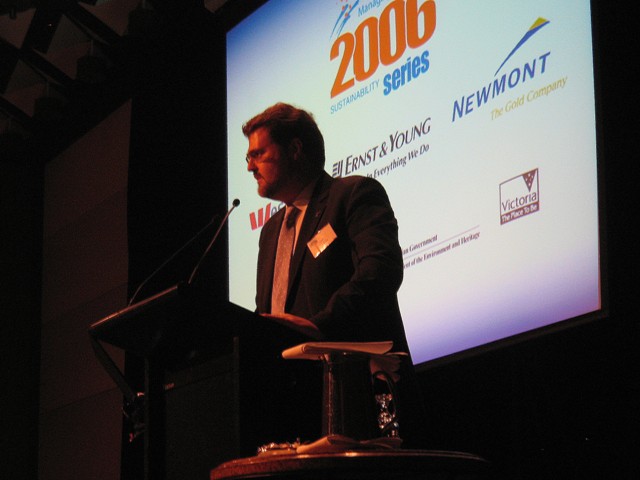
Geoff Lawler leans into the future

Alex, Christine, Bob, Dave – and my empty chair (photo taken by Murray)

Alex, Murray, a cradled Australian red and Bob

Glowing with relief, sake and sunburn
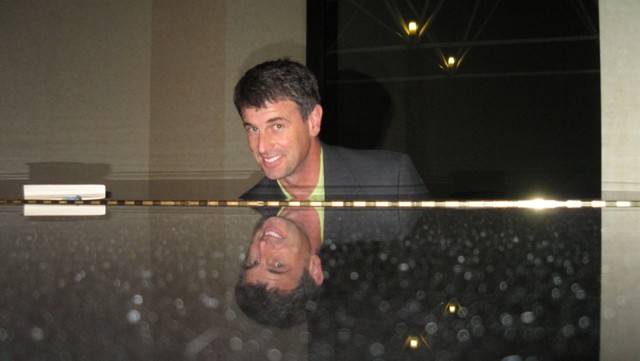
Our two pianists, Bob (and Alex), try (unsuccessfully) to break into locked hotel piano

In the lift/elevator en route to a well-deserved rest
Wednesday, September 20, 2006
SYDNEY
Yesterday, as we flew in from Auckland, I read China Syndrome, by Karl Taro Greenfeld. Published by Penguin (though on the title page that’s rendered as Pengiuin), this is the story of SARS. Stunningly well written – more like a novel. A stupefyingly powerful case for transparency at all levels of the global economy.
The discussion in Sydney was livelier than in Auckland. Noel Purcell (Group General Manager, Stakeholder Communications, Westpac) kicked us off, arguing that business is now at a cross-roads, but that the paths leading outward are poorly signposted. Session chairs included Karen Waldmann, General Manager Regulatory, Integral Energy, one of the local companies that recently took a stand on climate change.
One of the most powerful elements of the presentations to date as been the stories told, Bob about his attempts to grow wheat and other crops without agrichemicals in his parallel-to-IDEO farming life, Dave about the growing pressure on companies like Intel to get toxic materials out of the value chain. The recent EU injunction to the ICT industry to get lead out of all of its products, including the tin-lead solder that has been a central feature of ICT technology since the get-go, has been the equivalent, Dave said, of saying to McDonald’s and Burger King that they can make all the burgers they want – just so long as they don’t use beef.

Dave (Stangis) and Attracta (Lagan) en route to airport
Tuesday, September 19, 2006
SYDNEY AND THE MISSES EARTH
We flew across to Sydney today, then made our way down to the Harbour for a drink ahead of being picked up by a boat owned by Ros Kelly (who I first knew when she was Australia’s Environment Minister) and her husband David Morgan (CEO of Westpac Banking Corporation). While we waited for Peter Kinder of KLD Research & Analytics – who just happened to be in Sydney – to arrive, several of us got embroiled with the Miss Earth Australia candidates (see photos below). In addition to their aesthetic qualities, they have to have a firm grip on at least one environmental issue. So the photos show us talking about bidoversity, salinization and the like. Honest.
When the boat and Peter had arrived, it was a tough job to prize our speakers away from the young ladies in green. But the effort was well worth it, as the boat put on speed and shot across the harbour. We picked up Ros and a friend, Peter Thompson, who is a leading educator, communications consultant, broadcaster and author. For many years he has been an ABC radio and television broadcaster and has hosted the ‘Talking Heads’ program on ABC TV. His publications include Persuading Aristotle.

Ros Kelly
Ros – who among many other things was the first Australian MP to give birth while in office (I discover in her Wikipedia stub, http://en.wikipedia.org/wiki/Ros_Kelly) – was great fun, as ever, and the party was under way. Later, we took a slow spin around the maritime museum (with its replica of Captain Cook’s bark The Endeavour, in which he went looking for the ‘Great South Land’) and then headed across to a small cove to anchor and have supper – watching the sun go down over the Sydney skyline. Breathtaking. Found myself wondering what Cook would have made of all this?
When we got back to the harbourside, David Morgan was there to meet and we all repaired to a fascinating bar to catch up and consider how best to respond to the Australian coal industry’s hard-ball tactics in response to recent attempts to get climate change onto the political agenda here.

Alex musing

Bob (Adams) does his research – Christine (Charles) in background

Four speakers (including me) carry out an eco-invigilation

We’re off to pick up Ros and Peter

Alex and Christine

Alex and Peter (Kinder)

Peter (Thompson), Bob (Adams), Dave (Stangis) and Attracta’s hands

Opera House and Bridge
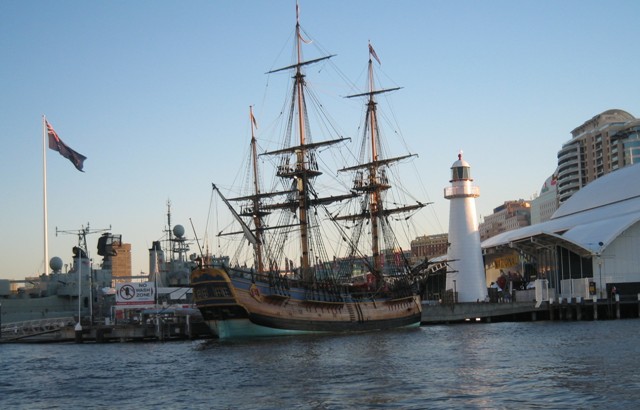
The Endeavour

Waterfront

Replica paddle boat with Wallenius giant

Red water 1

Red water 2

Sunset over Sydney
Monday, September 18, 2006
SUSTAINABILITY 3.0: THE INNOVATION IMPERATIVE
And so we are off – with the first in the 2006 conference series held today in the Hyatt Regency hotel in Auckland. Murray Edmonds kicks of, saying this – our ninth series – is his swansong. Then come Ann Sherry, CEO of Westpac Banking Corporation in New Zealand and Judith Tizard, who – take a breath – is Minister of Consumer Affairs, Minister Responsible for Auckland Issues, Associate Minister for Arts, Culture and Heritage, Associate Minister of Transport, Associate Minister of Commerce and Minister responsible for Archives New Zealand and the National Library. Then me.
My theme was that we are headed towards a Sustainability 3.0 agenda, where 1.0 was the compliance agenda (when business was forced to do things by regulators and, as a result, was on the defensive) and 2.0 has been the corporate citizenship agenda, which like a snowball has scooped up a seemingly endless spectrum of issues, from human rights and bribery and corruption through to climate change. The Sustainability 3.0 agenda will see a growing focus on fun, creativity, innovation and entrepreneurial solutions that can replicate and scale.
My presentation will end each time with an edited version of an ABC TV program profiling Jeff Skoll, with cameos from people like George Clooney, Al Gore, Jesse Jackson and Robert Redford and social entrepreneurs like Martin Fisher of KickStart and Bill Strickland of nonprofit Pittsburgh-based Manchester Bidwell Corporation, which offers after-school programs to at-risk public school students and vocational training for adults. The producer, Grace Kahng, had very kindly edited down the film for me.
Then the rest of our team were Bob Adams, Head Designer of the Sustainability Practice at IDEO, Dave Stangis who is Director of Corporate Responsibility at Intel, Christine Charles who is Director of Environment & Social Responsibility at Newmont Australia, and Alex Barkawi, Managing Director of Sustainable Asset Management (SAM). Each day, as the tour travels around, we will also have local people chairing the sessions. Today, for example, we had people like Jim Collings (General Manager, Shell New Zealand) and Rachel Dupree (General Manager of the Sustainable Industry Group at the Ministry for the Environment). The day is brought to an end by a brief overview by yours truly, followed by Attracta Lagan of Managing Values, a long-standing friend and colleague who has taken over from Murray in working out where this travelling circus will head next. We know where we are headed toimorrow, however: Sydney.
Sunday, September 17, 2006
RANGITOTO AND MUSTANG
No sooner had we (Bob Adams of IDEO, Alex Bakarwi of Sustainable Asset Management, Dave Stangis of Intel and I) arrived at Auckland airport, than Murray Edmonds had scooped us off first to central Auckland, then to the ferry dock – from where Attracta Lagan took us out to Rangitoto Island. We walked up through the lava fields, in fitful sun and fitful rain, past the volcano’s gaping maw to the summit – from where you look out over the Rangitoto Channel to distant Auckland.
As we were getting ready to walk back down, a Battle of Britain memorial flypast began, with an extraordinary collection of old planes, among them a Catalina, a Dakota in D-Day colours, and a P-51 Mustang, I think the first time I have ever seen one aloft. Tim flew the Mustang in India, where I seem to remember they used to fly beer up to great heights to flash-distil it. No doubt a great contribution to the war effort. I also knew someone whose father was one of the first Mustang pilots shot down over Germany and was tortured ferociously, by people desparate to know about a super-weapon that was beginning to turn the air war in the Allies’ favour. Stunning, stirring sight as the growling, geriatric warbirds went round and round our summit, before heading out across the Channel to Auckland. But you could also imagine what similar aircraft in less friendly hands might have sounded like over Pearl Harbor or, in WWII Australia, Darwin.

Mustang

Catalina

Distorted tower
THE SPIRE
I finally read one of the most extraordinary novels I have yet come across on the flights to Auckland: William Golding’s The Spire, first published in 1964. Various people had recommended it, and it seemed particularly appropriate since when we did one of those rapid-fire word-choice tests many years back, in which you have to choose between matched pairs of words like foundation and spire, I went for spire with no hesitation. Aspirational. In my mind, at least, if you were building a spire the foundations would logically already be in place. Not in Golding’s book. My brain is now seething, infested with the story. The humming, then shrieking pillars in the cathedral on top of which Dean Jocelin builds his towering folly struck me (whatever Golding intended) as a powerful metaphor for the ecosystem changes we are beginning to detect all around, in our climate, marine fisheries and so on – as we continue to build our unstable civilization upon ever-more-precarious ecological foundations.
ANZ VS VEGETARIANS
The Air New Zealand flight from London to Los Ageles yesterday confronted me with some of the worst efforts at vegeratian food it has ever been my misfortune to confront. Before long, I gave up and went on an enforced diet. The good-hearted young steward had said it was his first day and when he later wanted to know if there was anything he could do better, I didn’t have the heart to suggest shooting the chefs.
But then on the leg from LA to Auckland, quite unprompted, a new steward said he hadn’t even bothered to put my vegetarian meal in the oven, it was so horrible. In so many words, he said that ANZ can’t be bothered with vegetarians and I would be better of with the ‘bland food’ option, where at least you got the odd potato. Hard not to agree. The sandwiches I was offered at one stage looked as though their flilling had been scooped up from the outfall from a silage clamp or intensive piggery.
Thursday, September 14, 2006
WHAT WOULD YOU HAVE GOT IF YOU HAD CROSSED MOTHER TERESA WITH RICHARD BRANSON?
Have just finished listening to and editing the taped conversation I did with Pamela Hartigan a week or so ago, for the second in SustainAbility’s Skoll Program series of podcasts. We got so carried away that I have gone Rambo and edited it into a Part I and Part II. Part I is provisionally titled: ‘How Not to Give Away $1 Million.’ And Part II: ‘What Would You Have Got If You Had Crossed Mother Teresa with Richard Branson?’ The answer to the riddle, originally posed by Pamela, is the social entrepreneur’s social entrepreneur, Muhammad Yunus of the Grameen Bank. But am glad no-one seems to have tried the experiment. Hybrid vigour can be taken too far.
Am beginning to enjoy this new format and technology as a way of connecting both with the agenda and the wider world. Tomorrow am off to Los Angeles, then Auckland, Melbourne and Sydney, and am taking one of our new (well, bought used off eBay) Sony MD Walkmans – or Walkmen – with me in the hope of chasing interesting stories to ground.
Thursday, September 07, 2006
ENVIRONMENT FOUNDATION
The Environment Foundation, which I chair, had a very productive Trustees’ meeting today, hosted as usual at SustainAbility’s offices. We were joined by a new Trustee, Halina Ward. And an idea I have been developing since the Richard Sandbrook memorial event earlier in the year – which would involve developing a collective history of UK environmentalism ahead of evolving some degree of consensus on where next – got a strong following wind. Have tested the idea on a variety of people in the field and all have been very positive, so am planning to move ahead, but would be interested to know whether anyone else is already embarked on such a venture?
AN INCONVENIENT TRUTH
This evening, Elaine and I went along to the Vue Cinema for a pre-release screening of Al Gore’s film, An Inconvenient Truth. The event was co-hosted by Business in the Community, The Prince of Wales’s Business and the Environment Programme, and Tomorrow’s Company. A delightful gathering of the tribes. I had had high expectations of the film – and they were exceeded. Gore was graceful, powerful, persuasive. The links he made to the near-death of his son and the death from lung cancer of his only sister, Nancy (the irony being that their father was a tobacco grower who, to that point, had largely ignored the evidence on the health effects of smoking), achieved some energetic emotional spotwelding.
The overall sense given is that it may well be too late to do much of any great import, at least if we leave it very much longer, but that the idea – promoted by people like Bjorn Lomborg – that all we need do is invest in helping people adapt is borderline criminally insane.
[Later footnote, on September 8: Interesting that Stanley Fink, deputy chairman of the Man Group, introduced last night’s film screening. Today’s Finanical Times carries the news that he is stepping back from executive duties to devote more time to philanthropy. This follows Bill Gates’ recent stepping back announcement, and that by Citigroup’s Sandy Weill that he would give away $1bn. A very welcome trend, but what will happen (to the trend) when the next recession kicks in, I wonder?]
Wednesday, September 06, 2006
MEDIA ON MY MIND
Spent a fair amount of time this week in the normal cycle of writing columns for various publications, including Director magazine, Grist and Nikkei Ecology (published in Japan). I also got mentions in the Financial Times and Wall Street Journal Europe, plus – a real thrill – had a piece appear in the fortieth anniversary issue of Resurgence.
Pamela Hartigan was in the office for several hours this afternoon, both so we could discuss follow-up on the book and record a new podcast, which (owing to my impending absence in Australia and New Zeland) should be out in a couple of weeks. The Schwab Foundation, which she heads, is building a wider range of media relationships around the world. Indeed, she had come on from a meeting with the Financial Times – which hopefully will help when the book comes out next year.
Tuesday, September 05, 2006
THE CYCLING WOUNDED
As the current frenzy of greening builds in the media, we are being encouraged to get on our bikes. All well and good, until you factor in the perilous conditions in which cycling is currently done. Jan-Olaf Willums was in the office earlier today, with Richard Blundell, his colleague in the TH!NK electric car venture. Jan-Olaf’s head now has an extraordinary, livid scar which loops across his scalp, from a wound he recently received coming off his bicycle on his way downhill from seeing an artist we both adore in Provence, Sama. That, I think, we can put down to over-enthusiasm.
Then, this evening, Elaine and I had Peter Kinder to dinner – and it turns out that when he came off his bike recently he broke all his ribs and did major damage to a shoulder, all of which are still in the process of mending. Which made me wonder whether I hadn’t got off reasonably lightly a couple of weeks back? Meanwhile, the Neurofen works wonders, though Peter was recommending industrial quantities of Ibuprofen.
Whatever Peter’s excuses, mine – of being hit from behind while well inside a cycleway – must qualify as almost watertight. As to getting back onto the road, it turns out that the mechanic who usually sees to my bike is away for a week, overlapping with my trip to the Antipodes, so it seems I’ll be bikeless for a while. It’s a little like losing a limb.
Sunday, September 03, 2006
FORUM FOR THE FUTURE ALUMNI
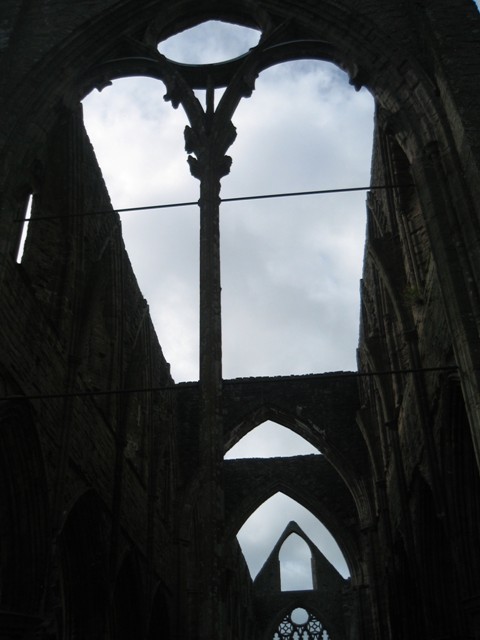
Tintern Abbey
Got back home earlier this evening after driving back from Ross-on-Wye, which we visited for the first time this morning. Last night, we had arrived at The Leadership Trust centre in West-under-Penyard (http://www.leadership.org.uk), just outside Ross, where I was due to do an evening session with alumni of the Forum for the Future Master’s programme. Soon after we arrived, we sat in on a session that Forum CEO Peter Madden and a colleague did on futurology and scenarios, then after dinner Sara Parkin introduced me and off we went. After a short introduction, I basically turned it over the to the 50-or-so alumni to drive with their questions and comments, and the discussion took wing. Hugely enjoyable. Elaine and I got to bed around 12.30, with the distant rumour of jollity continuing on virtually until sunrise. On our way back today, we visited Symond’s Yat, walking for a couple of hours alongside the Wye, and meeting a huge caterpillar along the way, and then dropping in on Tintern Abbey on the way home – arriving at the Abbey as Vespers were sung.

Market building, Ross-on-Wye

Wye, Symond’s Yat
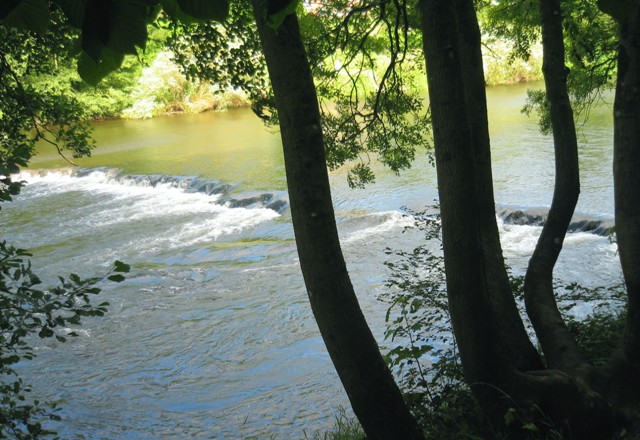
Ditto

Caterpillar – for what? Does anyone know?

Wye
Saturday, September 02, 2006
PODCAST PAT

Pat Elkington – listening to taped interview
This morning, I managed to record a long sequence of my mother, Pat, talking about cellar that sits beneath the oldest end of Hill House. Apparently someone came through a few weeks back who was something of an expert in such things. He went down into the cellar and pronounced that it was possibly a couple of hundred years older than we had thought – we had always assumed it was from the 1500s, predating that end of the house. We also talked about the cider presses that used to be set up in our back yard as late as the 1920s, when the turned Rissington Redstreak apples into a powerful cider, much of which was chanelled through lead pipes into barrels in the cellar. There’s a new book by Michael Boyes, a neighbour, which contains a 1920s photograph of eight men at work on the presses, all wrapped in sackcloth aprons. We were given the photo some years ago by Bill Oakey, whose family were involved in the cider-making way back then. Sadly, the last Redstreak apple tree was felled a few years back, apparently.
But much of the time we talked about the ghosts that have long haunted that end of the house, most notably the 12-year-old girl who many years ago told my siblings via a ouija board session that she had died falling down the back stairs while visiting the house. Have never believed in ghosts, but this one has put in too many appearances for comfort. Even guests who knew nothing about her have found themselves following her downstairs. With advice from another expert, I think from Gloucester Cathedral, Pat eventually did a DIY exorcism, which seems to have worked. Now the idea is to edit this morning’s tapes down into some sort of podcast for the website.
Friday, September 01, 2006
THE SPIRE AND A BLOODIED EYE
Another Friday, but one that marks the 33rd anniversary of Elaine and I getting married in 1973 – an event I suspect we have never previously celebrated as such, and rarely remembered. More often than not I have been abroad, but not this time – and we drove down this morning to Little Rissington, en route to a Forum for the Future event tomorrow, near Ross-on-Wye.
At the last moment, however, my father had to take my mother across to Cheltenham to get an injection in her eye, so after lunch we drove across to Stow-on-the-Wold with Caroline. There Elaine fell in love with a raku ceramic hare, sprawling out in a gallery window, its legs crossed ahead and behind. So it became the first anniversary gift more or less in living memory. A few doors along, we also dropped into the Borzoi Bookshop, from which I emerged with Sun Shuyun’s The Long March, Douglas Galbraith’s A Winter in China, and William Golding’s The Spire – a book I had been meaning to track down for years. In that old test where you are asked to choose – fast – between the words foundation or spire, I went for spire without any hesitation, as did Elaine. I suppose we both assume that the foundations will sort themselves out … unlike those under Dean Jocelin’s towering folly.
On the way back from Stow, we dropped down into Icomb in the hope of seeing Bunny (Vanda) Palmer, and arrived a few moments before she came back from a trip across to Stow. Had a wonderful time catching up and discussing the diaspora of once-upon-a-time children from our various families. In her eighties, Bunny is an extraordinary advertisement for old age, though that generation is not without its torments these days. When we got back, it was to find the parents back – and Pat’s eye so bloodshot that it reminded me of that ghastly still from Eisenstein’s Battleship Potemkin film.


